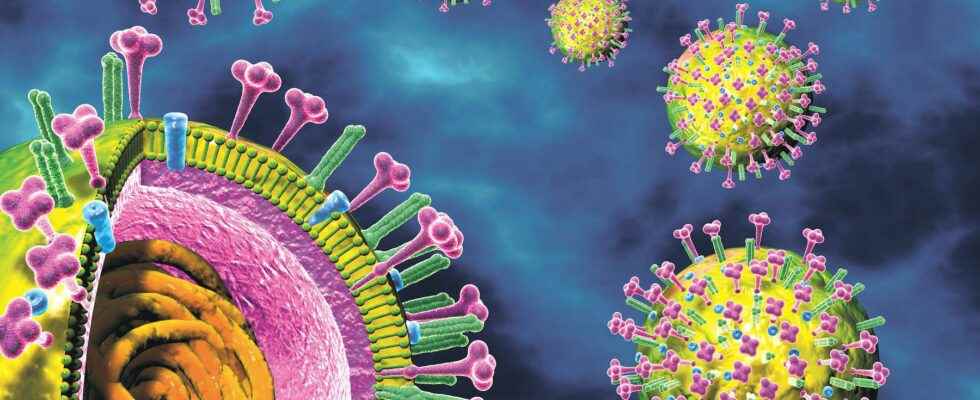The flu Spanish or great flu is responsible for one of the pandemics deadliest encountered by mankind. Just after the First World War, between 1918 and 1921, a particularly virulent strain of the virus of the flu grows and spreads all over the world. Unlike seasonal flu affecting more fragile people (infants and the elderly), this disease particularly affects young adults between 20 and 40 years old.
of a contagiousness very high, it would have killed between 20 and 50 million people in 2 years.
Viruses influenzaresponsible for influenza, are enveloped viruses, RNA single strand. Genus A viruses are classified into subtypes according to the nature of the glycoproteins (H or HA for hemagglutinin and N or NA for neuraminidase) expressed on their surface. According to the work of an American researcher Mickael Worobey, published in 2014, the Spanish flu virus appeared by combining the pre-existing human H1N8 strain with an avian strain carrying the genes coding for the N1 protein. This reassortment would have allowed theemergence of a new type H1N1 cause of the Spanish flu pandemic.
The particular context inherent in the war, the poor sanitary conditions, the weakening of the populations favored the spread of this new virus, against which young adults were not immune (exposure in childhood to the antigenically different H3N8 strain) . The particularly high mortality rate (between 2 and 4%) can also be explained by the numerous bacterial infections (pneumonia) aggravating adding to the virus at a time when antibiotics did not exist.
The Spanish flu: a dazzling pandemic
Different hypotheses, as to the geographical origin of the appearance of the virus, have been proposed. One of them locates the appearance of the first case in a military camp in Kansas in March 1918. The proximity and the deployment of the American soldiers in Europe favored the first wave of the’epidemic. This, not very lethal but very contagious, ended in the summer of 1918. Following a probable mutation, the highly virulent second wave led to a greatly increased number of deaths from thefall 1918. The absence of specific measures taken by the authorities, the censorship in this time of conflict and the rail and maritime movements make it a pandemic which is particularly deadly in non-immune populations (Fiji Islands). After a few weeks of calm, a less virulent third wave raged in early 1919. The last cases were reported in July 1921.
You will also be interested
[EN VIDÉO] Explanations about the flu virus The flu is a scary disease. Jean-François Saluzzo, virologist at the WHO and author of a book on the subject, discusses in detail the influenza viruses, the origin of the flu. © Futura-Sciences
Interested in what you just read?
